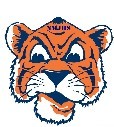
Lesson 16 - Sumer City-States - Test
Assessment
•

. Perez
•
Social Studies, History
•
8th Grade
•
72 plays
•
Medium
Student preview

50 questions
Show answers
1.
Multiple Choice
Where was Sumer located?
Sumer was a region in southern Mesopotamia.
Sumer was located in the African plains of Zamunda
Sumer was a region in southern Zamunda
2.
Multiple Choice
What were people from Sumer called?
Sumericans
Sumerians
Sumertites
3.
Multiple Choice
Which of the following cities was not a major city in ancient Sumer?
Ur
Eridu
Pahokee
4.
Multiple Choice
The cities of Sumer became centers of civilization that controlled which river valleys?
The Euphrates and Tigris
The Nile and Gambia
The Danube and the Thames
5.
Multiple Choice
What is a city-state?
A city that has the same name as
the state it is located in
A city that governs itself and its surrounding territory.
A city that is bigger than a neighboring state, like New York City and Delaware
Explore all questions with a free account
Find a similar activity
Create activity tailored to your needs using
.svg)

Unit 2 Chapter 1 Ancient Mesopotamia
•
6th - 8th Grade

MESOPOTAMIA
•
6th - 8th Grade

Early Civilization
•
7th - 8th Grade

Sumerian civilization
•
8th Grade

lesson 2 mesopotamian empires
•
6th - 8th Grade

Ch. 4 Sumerian City-State Review Game
•
6th - 8th Grade

Mesopotamia - Chapter 3 Review
•
8th Grade

6th R3 Mesopotamia
•
6th - 8th Grade